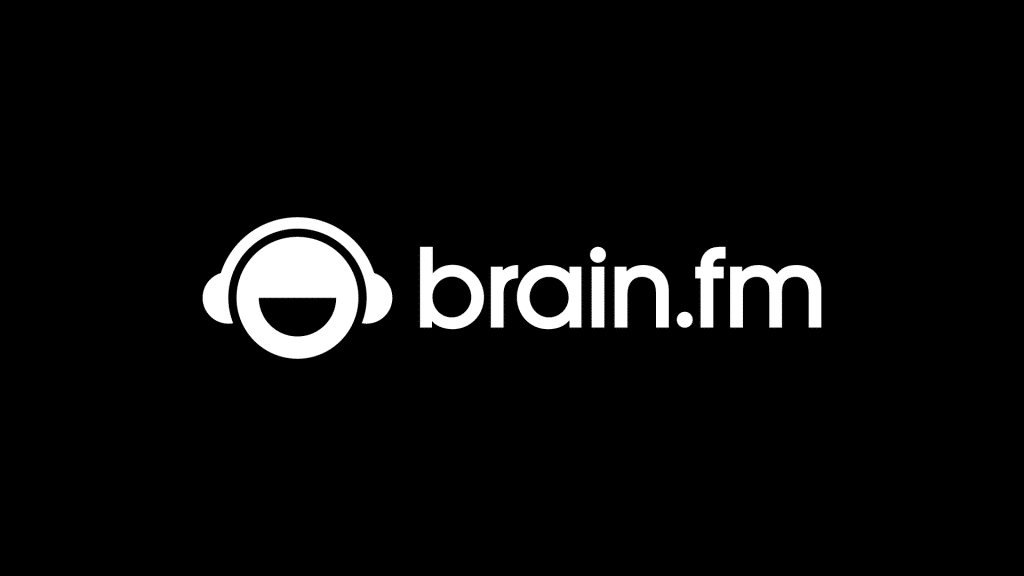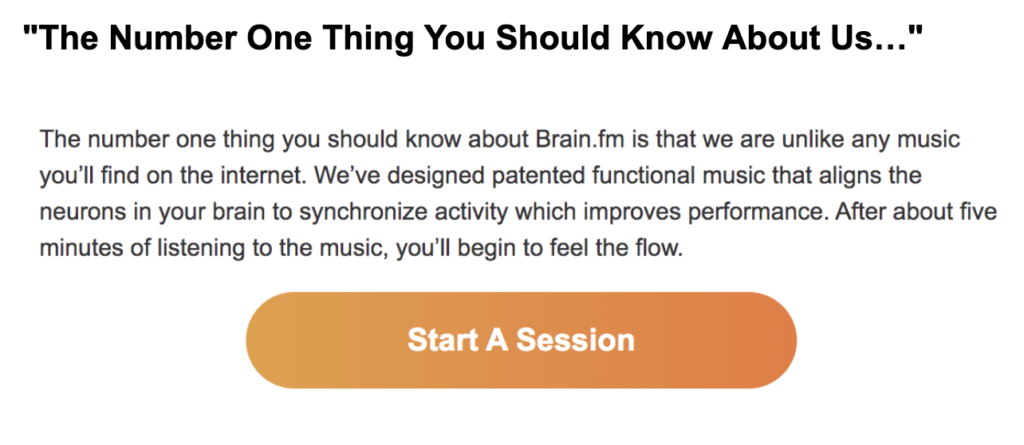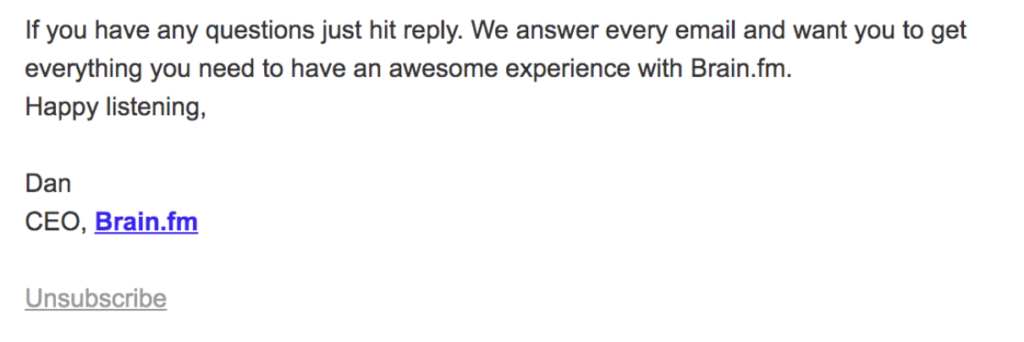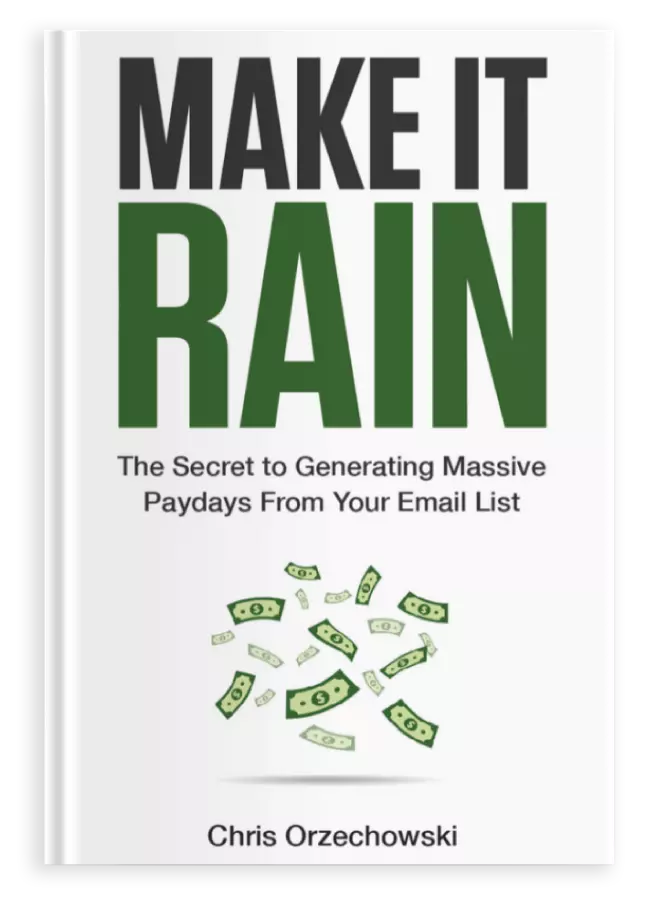[EDITOR’S NOTE]: A few years ago, a friend forwarded me an article from an unknown copywriter who was on a mission to write 29 sales letters in 29 days.
I thought to myself:
“LMFAO, what a dumbass!!!”
Jk
I didn’t say that.
I actually thought this was an awesome way to demonstrate your authority. And it got my attention. And if we’re being honest, I’m kind of fucking important around these parts. (Well, at least on this website, anyway.)
That copywriter’s name is Robert Lucas. And since that day many years ago, I’m proud to call him a friend, colleague, and one of the writers at my agency, Orzy Media.
He’s going to be doing today’s Email of the Week breakdown. This one is a good one.
It’s an email from Brain.fm.
Now, I’d never heard of this company before Robert put them on my radar. Apparently they make music that helps you focus.
I asked Robert, “Ay yo, my dude… does this shit slap tho?”
He replied:
“Oh yeah, this shit slaps.”
I said, “Okaly Dokaly, you can publish it.”
So here we are.
I’ll shut up now and let Robert take it from here…
…
..
.
Heyooooo!
Robert Lucas here — one of the copywriters on Chris’s team at Orzy Media.
The email we’re about to look at is a Welcome Email.
As you probably already know, a Welcome Email is the first email someone receives when they sign up for your list.
A Welcome Email is also one of the most important emails you will ever send.
It will (almost definitely) get more opens than any other email you ever send…
And people who engage with your Welcome Email are much more likely to engage with any other email you send after that too.
I won’t get too technical on you, but I will throw in a couple quotes here, just to show you I’m not bullshitting.
According to ReturnPath:
“Subscribers who are highly engaged with welcome messages tend to be higher-value subscribers than other groups. They read more and spend more.”
And…
“… the read rates of welcome emails are highly predictive of how engaged subscribers will be with subsequent messaging and how much they’ll spend.”
So, the more you can get people to engage with your Welcome Email, the more they will engage with your other emails…
And the more they’ll spend too.
In general, any sort of Welcome Email is going to be better than not having a Welcome Email at all.
But, just like with any other email — the better your copy is, the better the email will perform… both in terms of engagement and revenue earned.
Like Eddie Biroun did in his Email of the Week, I’m going to stray ever-so-slightly from ecom.
And today, I’m going to break down an email from a SaaS company called Brain.fm.
Why?
Because good email is good email.
That’s the philosophy that’s helped Chris earn over 8 figures for his clients over the past few years…
And if it’s good enough to do that — it’s good enough for me.
The reality is that SaaS email isn’t much different from ecom email which isn’t much different from personal brand email, etc…
If it’s good, then it’s good.
So let’s get into it.
The Rules For Email Of The Week
Every week, Chris puts on his favorite loincloth, grabs his spear, and walks off into the wild to find a juicy ecom email to bring home to us for nourishment.
He then dissects it and gives us the best parts, so we can use them to feed more money into our businesses.
Jesus… how’s that for an analogy?
Anyway, today I’m doing the same thing. My loincloth just has a little less blood on it.
This breakdown will be the same as the previous Emails of the Week you already know and love, but there is a slight twist:
I originally wanted to do a breakdown of a full email sequence. But that quickly turned into a 6,000+ word article.
It was obnoxious.
So instead, in this post, I’m breaking down one single email — the first email in Brain.fm’s Welcome Sequence — and over the next few days…
I’ll be sharing breakdowns for the other 4 emails in the sequence with my list. If you want to follow along…
Just click here to subscribe to my email list.
If you have an ecom email you’d like to share for an upcoming breakdown, slap a (metaphorical) stamp on it and email it over to (chris at theemailcopywriter dot com).
Tell him what you liked about it, and while you’re at it, tell him what your favorite book is too (I’ve heard he’s looking for recommendations).
The only rule?
Don’t send an email you wrote.
That would be like giving yourself a nickname like “Big Hoss…”
No one is going to physically stop you from doing it, but they’re also not going to think too highly of you, either.
What The Heck Is Brain.fm?
I’ll let the company speak for itself here:
“Brain.fm makes music to help you do what you need to do, better. The company uses a patented A.I. engine to create music backed by scientific research to help listeners focus, relax, and sleep. While other music is primarily made to sound good and evoke feelings, Brain.fm works with teams of scientists and composers to engineer music specifically designed to help you enter particular mental states within minutes of use.”
The TL;DR is:
Brain.fm creates music specifically designed to help you focus, relax, meditate, or sleep.
And if you’re wondering whether it works, my answer is “yes.”
I’ve been using it for a few weeks now, and I’ve noticed that I’ve been writing faster and that I’ve been getting into “flow state” more easily too.
So if you’re curious — give it a try.
But for now, let’s take a look at Brain.fm’s Welcome Email.
Subject: “Welcome to Brain.fm Robert!”
Quick (probably obvious) note:
This subject line says “Robert,” because that’s my name. If your name is Sandra, the email you get will say “Sandra,” and so on.
Okay moving on…
In general, there are 2 schools of thought when it comes to the very first email you send to a subscriber:
School #1 says:
“Make the first email outrageous, fun, and over-the-top.”
I like School #1. Some of my favorite emails I have ever written are over-the-top and completely ridiculous.
But in general, School #1 is best when you have already given the customer the thing they asked for (i.e., they have already bought a product, and you are sending an Order Confirmation email).
School #2 says:
“Don’t reinvent the wheel. Don’t do anything crazy. Just say ‘hi’ and give the customer what they came for.”
School #2 is best when you are still expected to deliver the thing the customer asked for (in this case, access to the service).
This is something our Copy Chief at Orzy Media, Angie Colee, constantly reminds us of:
Keep it simple. Every email you write doesn’t have to be an over-the-top masterpiece. Be clear and give the reader what they came for.
Obviously, this subject line falls into School #2.
Would this email still work if it was an over-the-top, completely ridiculous, “School #1” email?
I think so.
But it would be a bit riskier. Since it would be less straightforward — you might end up with more customer service requests like:
“How do I start my first session with Brain.fm?” etc.
That said, it would be interesting to test the difference in response between these two types of emails.
Regardless, this classic, School #1-style subject line works. It’s straightforward. It’s clear. It’s simple. It gives the reader what they came for.
Now, let’s get into the body copy.
Coming Out Of The Gate Like A ‘Roided Out Stallion
The first line of this email COMES IN HOT:
High achievers…
Entrepreneurs…
Fortune 500 professionals…
Superhero parents…
And bio-hackers!?!?
Did I just join a cult? If so — then hell yeah. I’m pumped about it.
Here’s an important thing to know about any purchasing decision:
When someone buys — or in this case, tries — a product, they take on a new identity.
When you sign up for Brain.fm, you’re not one of those “normal” people who just listen to “normal music” while they work anymore.
Instead, you are now part of a community of “100k+ high achievers, entrepreneurs…” etc.
We all crave community. We crave identity. We want to be something bigger and better than the current version of ourselves.
This line gives us a taste of that. It’s powerful.
Also notice how they included the number of users (100k+). This is a subtle way to inject social proof and credibility without being douchey or coming on too strong.
In addition to showing you your new identity and highlighting how you are now part of a powerful community…
The opening line also reminds you of the major benefit of the service:
Getting into mental states on-demand.
I won’t get too psycho-analytic here, but I’ll just say this:
I’d bet good money that the people who sign up for Brain.fm are Type-A personalities. They’re high-performers. They work hard. They like to be in control of themselves and their lives.
One of the things they value most is (probably) control…
And Brain.fm gives them the ability to be in control of their mental state.
Now, I’m not sure if the writer got that deep into some NLP-type stuff or whatever. I’m just saying that this benefit is very strong when you consider who Brain.fm’s users are likely to be.
Okay, on to the next line.
Setting Expectations
In general, when someone gives you their email address, one of two things is happening:
- They’re giving you a throwaway account that they rarely check, or…
- They’re giving your their primary email and hoping you don’t spam the fuck out of them.
Let’s assume the best and say that people are going with Option #2. They’re giving you their actual email address.
It’s a vulnerable thing, so they’re probably wondering what’s going to happen next.
This line does a great job of setting expectations and putting those fears at ease.
And it also hints (again) at the benefit of using the product:
“… maximize your productivity.”
This email constantly (and subtly) points the reader back to the main benefit of the product. It reminds you of the reason you signed up for a free trial in the first place.
Finally, this line gives the reader a reason why they should keep opening emails from Brain.fm.
“Over the next three days, we’re going to send you some of our favorite tips on how to get the most out of your free trial…”
This is important. And here’s why:
When someone receives this email — they’ve already signed up for a free trial, but they are not a paid member yet.
At this point, if you’re Brain.fm, your goal is to get this person to use your service as much as possible over the next 3 days. Because the more they use it, the more likely they are to upgrade and become a paid user.
Each email in this Welcome Sequence is a nudge to get the reader to use the service. However…
That nudge only works if the person actually opens and reads the email. And if you directly tell someone:
“Hey, we’re gonna send you an email every day for the next 3 days and try to get you to use our product so you will give us money…”
They’re probably not gonna open those emails. And your “nudges” back toward the service aren’t gonna work.
But, if you tell them:
“Hey, we’re gonna send you some valuable information every day for the next 3 days…”
They’re much more likely to keep paying attention and opening your emails, so your “nudges” actually have a chance at working.
Moving on…
“The Number One Thing You Should Know About Us…”
The third paragraph is the company’s USP. It’s gold.
“… we are unlike any music you’ll find on the internet.”
This line essentially says “You won’t find this ANYWHERE ELSE.”
Next…
“We’ve designed patented functional music that aligns the neurons in your brain to synchronize activity which improves performance.”
In general, when you’re writing copy, it’s best to keep things as simple as possible. But there is an exception…
And it’s when you need to show your expertise to gain the reader’s trust.
That’s what this sentence does. It communicates the message of:
“Hey, we know a lot about this stuff. We made these magic beeps and boops that help you crush it at work.”
And it does so in a way that is deliberately just a little bit over the reader’s head to show expertise and gain trust.
Next…
“After about five minutes of listening to the music, you’ll begin to feel the flow.”
This is future pacing, and it’s a classic copy technique.
One of the reasons people buy products is because they want to feel a certain way.
This line paints a picture of how using Brain.fm will make the reader feel and reinforces their decision to sign up for a trial.
I don’t love the big button in the middle of this email. But all the copy around it is so great that I’ll look past it.
Okay, next paragraph.
Dimensionalizing The Benefits
In 2019, I went through Chris’s copy coaching program and it was the best business investment I ever made.
One of the concepts I repeatedly heard him talk about was “dimensionalizing the benefits.”
Basically, this means taking the benefits of your product one step deeper. Going from what I’ll call a Surface Benefit to a Deeper Benefit.
Here’s what that looks like for Brain.fm:
Surface Benefit: Get into flow state on-demand.
Deeper (Dimensionalized) Benefits: Work faster. Get more done. Have more free time. Spend more time doing the things you love. Be the best version of yourself.
People talk a lot about Features vs. Benefits, and that’s an important distinction. But I also think it’s important to look at Surface Benefits vs. Deeper Benefits.
Customers buy products for both the Surface Benefits and the Deeper Benefits, but those Deeper Benefits are what hold the most purchasing power — whether people consciously realize it or not.
A Genuine Sign-Off
The last paragraph isn’t rocket science. But it is genuine. And that’s what’s important.
When the CEO of a company says “we answer every email,” you immediately feel a bond to the company — regardless of whether you actually send them an email or not.
You get the sense that they truly do care about their customers and want to give them the best experience possible.
A good product gets people in the door. A good experience keeps them around.
And as a final note — I love the fact that the unsubscribe link is clearly visible.
It hurts when people unsubscribe from your list, but I’d rather have a small list of people who actually want to hear from me than a large list of people who never open my emails.
Make it easy for people to unsubscribe.
It’s a better customer experience. And it’s also an opportunity to sell from a place of power. No one wants to hang out with someone who says:
“OMG will you please please PLEEEAAASE hang out with me!?!?”
It’s needy and annoying.
Instead, people want to associate with people (and businesses!) that provide legitimate value.
When you make it easy for people to unsubscribe, you are communicating a message that says:
“There are plenty of people who find our emails valuable. If you’re not one of them, that’s okay. Here’s the door.”
Oddly enough — approaching it from this perspective makes people MORE likely to stick around.
Big Takeaways From Brain.fm
- Your Welcome Email is, quite possibly, the most important email you will ever send to a subscriber. If you can get a reader to engage with your Welcome Email — they’re more likely to read more emails and spend more money.
- If your reader is expecting you to deliver access to something in your Welcome Email — the safest bet is to keep your subject line simple and straightforward.
- Buying — or even trying — a product is like taking on a new identity. Show your reader how using your product makes them a different (and better) person.
- Seamlessly working in stats like “100k+ users” is a subtle, but powerful way to inject social proof into your copy.
- Repetition of your product’s USP throughout your Welcome Sequence is a good idea. Do this subtly by working it into sentences — don’t beat your reader over the head with it.
- Set expectations with the first email you send to a new subscriber. How often can they expect to hear from you? What will you send them?
- Early on, tell your reader exactly what makes your product different from everything else out there. Can they get this anywhere else? Why should they buy from only you and no one else?
- Future pacing is almost always a good idea. What does it feel like to use your product? How will it improve the customer’s life? Paint a picture of this.
- Dimensionalize the benefits of your product. Take your benefits deeper than what’s on the surface.
- Be genuine. And make it easy for people to find the door if they want to leave.
What To Do Now
- Subscribe to Chris’ email list so you can get ALL of the Emails of the Week delivered straight to your inbox, automatically.
- Leave a comment below and let me know what you liked about this email.
- Send this breakdown to someone you know. You might help them get their content to go viral.
- Subscribe to my email list if you want to see a breakdown of the 4 other emails in this sequence.
- Try out Brain.fm and see if it helps you work faster or relax harder.
Orzy’s Analysis
This is a damn good welcome email. Smooth like butter.
I love the framework of this one. Definitely something any e-commerce brand owner can model for their own business.
I’d say more, but Robert did a bang-up job here. Thank you Robert!






